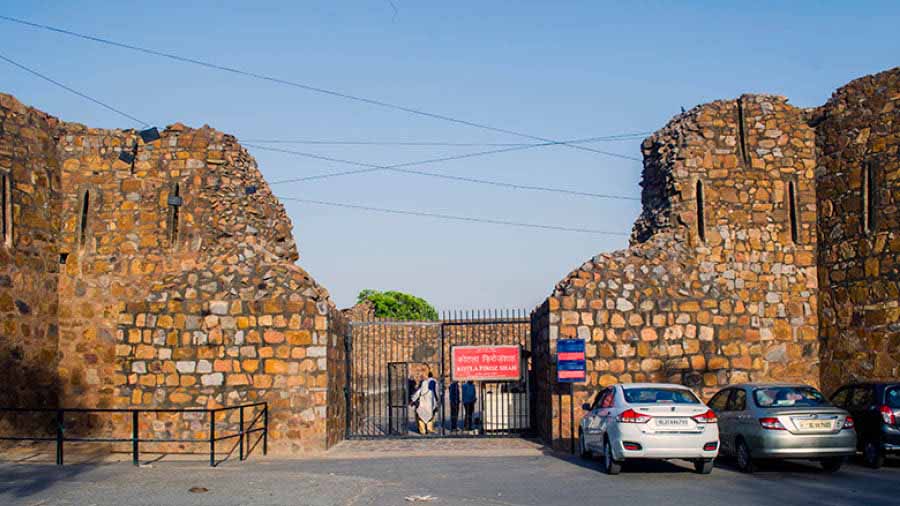It was January 24,1556. The second Mughal emperor Humayun stepped out of Sher Mandal, his library in Purana Qila. As he was descending the spiral stairs of his library with a handful of books, he heard the azaan (call of prayer) and as a devoted Muslim he at once decided to sit down for his prayers. But it was not meant to be. As he knelt down, his foot caught his flowing robe and he stumbled in a fatal fall down the stairs of Sher Mandal. He died three days later and was initially laid to rest on the grounds of Purana Qila. His body was later moved to Kalanaur in Punjab and finally laid to rest in the magnificent Humayun’s Tomb in Delhi.
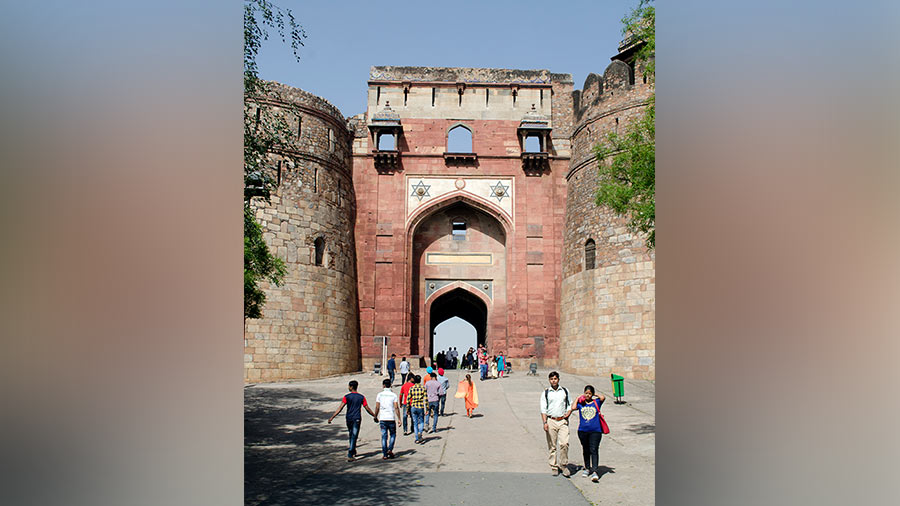
Western gate of Purana Qila, which presently serves as the entry to the fort
Today, the Sher Mandal still stands amid the ruins of Purana Qila just north of Humayun’s Tomb complex. The irregular oblong structure of Purana Qila dates back to the time of Humayun and was initially known as Dinpanah. It was the sixth citadel of Delhi. But in 1540, Humayun was ousted by Sher Shah Suri, who destroyed the existing citadel of Dinpanah and raised his own citadel at the same site and called it Shergarh. Later, when the Red Fort came up, it came to be known as the Purana Qila, which is what it is called to this day.
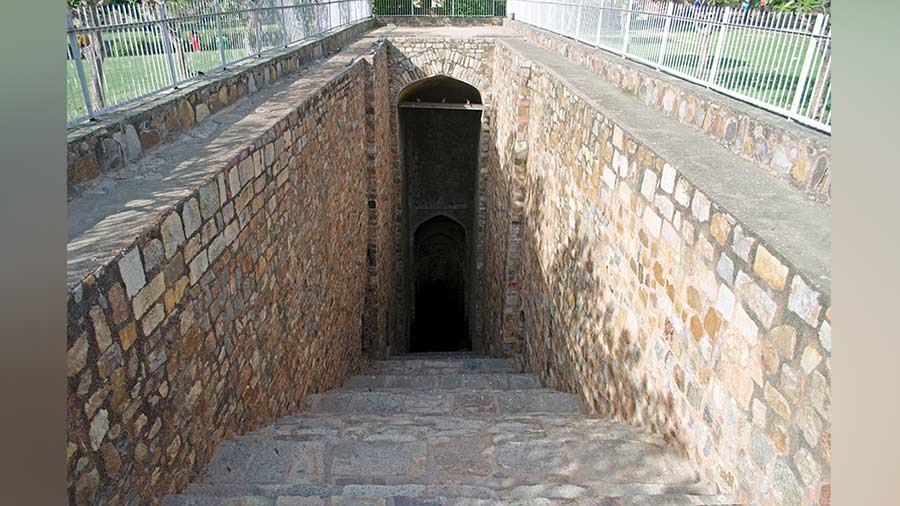
Stepwell inside Purana Qila
Interestingly, the history of the Purana Qila region dates back to the 3rd century BC. The earliest literary references identify the city with the mythical Indraprastha, the grand capital of the Pandavas, the heroes of the ancient epic Mahabharata. In 1911, when the Purana Qila (literally meaning the Old Fort) was being cleared of squatters, officials stumbled upon a village called Indrapat, within the fort complex. Since the mid 1900s, several archeological excavations have yielded evidence to support that the area in and around Purana Qila has been continuously inhabited for over 2000 years.
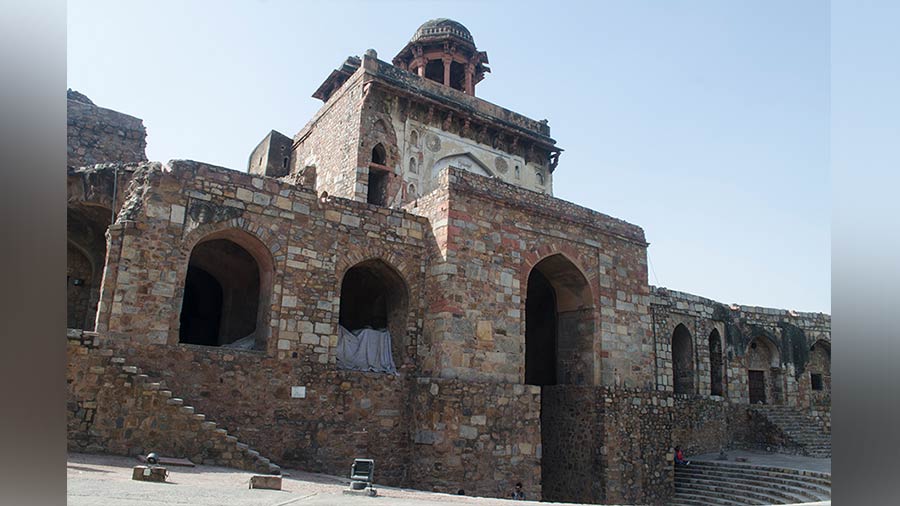
Talaqi Darwaza at Purana Qila, Delhi
The fort was constructed on the western banks of Yamuna River and was surrounded by a deep moat. The river has long shifted course and the only traces of the moat remains to this day. Today, the entry is through the Bara Darwaza on the western side. On the right hand side of the entrance is a small museum housing artifacts found from the Purana Qila excavations.
Apart from the western gate, the walled complex has two other gateways — one on the north known as Talaqi Darwaza, while the southern counterpart is known as Humayun Darwaza. This was not constructed by Humayun. The name originated because it faces Humayun’s Tomb. Both the gateways are massive in size and are complete with chattris and towering arched entrances.

Sher Mandal
Sher Mandal still dominates the manicured gardens of the Purana Qila. Built by Sher Shah, this two-storeyed octagonal sandstone memorial probably served as a pleasure resort. It is crowned with an octagonal chhatri. After recapturing Delhi, Humayun turned Sher Mandal into his personal library. Sadly, his favourite library happened to be the place of his fatal fall, less than a year after he regained the throne of Delhi.

Qila-I-Kuhna Mosque
In front of the Sher Mandal stands a small stepwell and the remains of a hammam. Next to it stands the star attraction of the old fort, the Qila-I-Kuhna Mosque (literally meaning Mosque of the old fort). Built by Sher Shah in 1541, the single domed mosque has a beautiful white marble and red sandstone inlay complete with beautiful floral and geometric ornamentation. The eastern wall contains five arched entrances. The central arch is higher than the others and the size of the arch diminishes as it moves away from the centre. The central arch is more ornate with marble and sandstone layout and is topped with a small oriel window. The western wall contains five highly decorated mihrabs with marble arches with elaborate ornamentation.
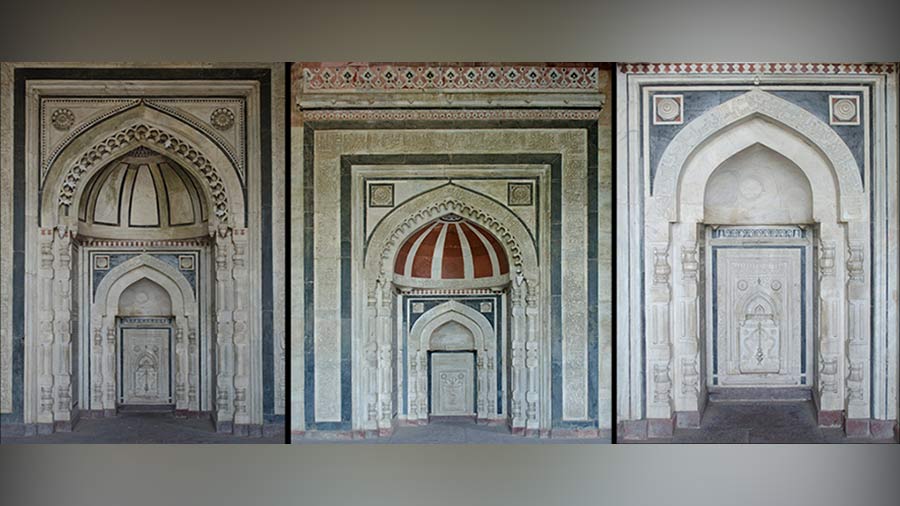
Collage of ornate mihrabs of Qila-I-Kuhna Mosque
So, next time in Delhi don’t miss out on the Purana Qila and it can be clubbed easily with more famed and touristic sites of Humayun’s Tomb.
Travel Information:
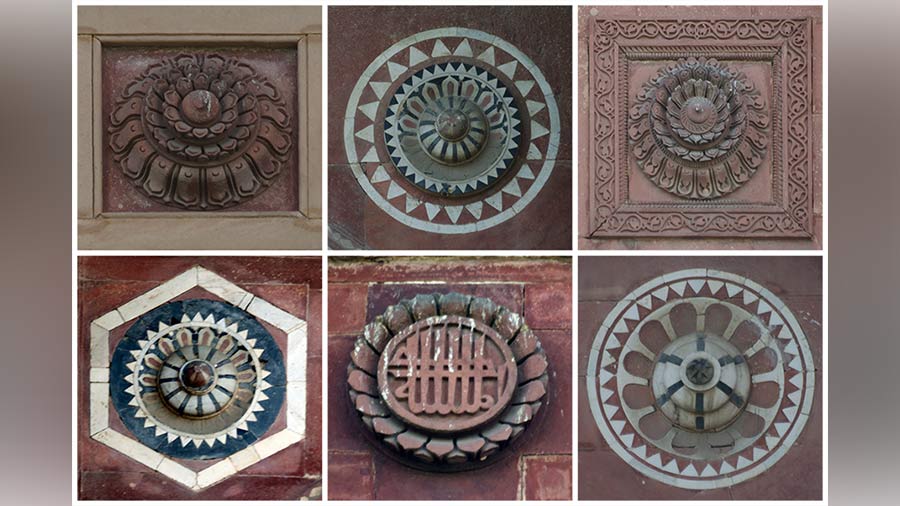
Collage of ornamentation inside Qila-I-Kuhna Mosque
Time: 7am – 5pm
Entry Fee: Rs30 for Indians and Rs300 for foreigners
Photography: Photography is free. Videography is Rs25. However photo and video inside the museum is prohibited.




